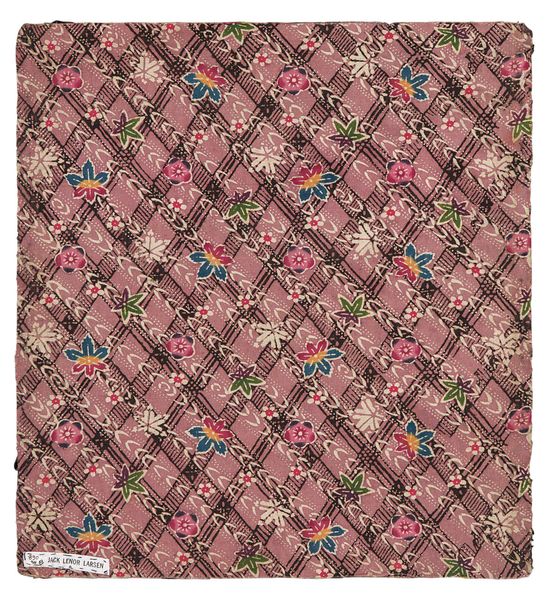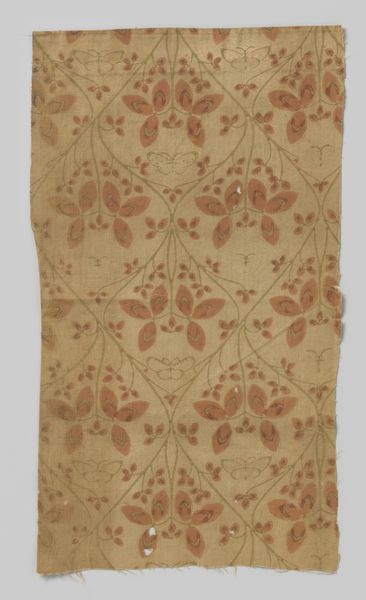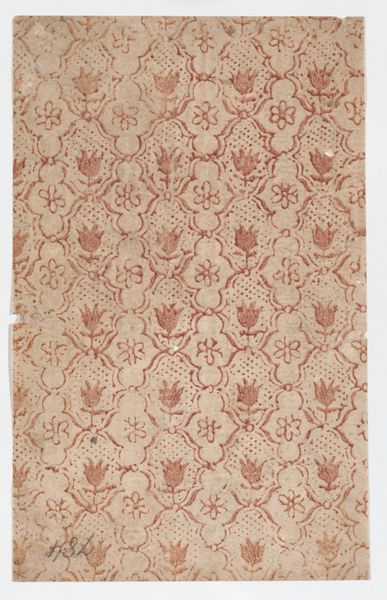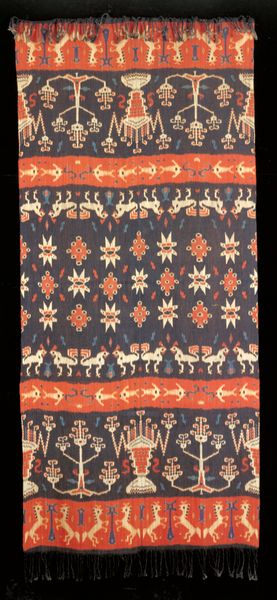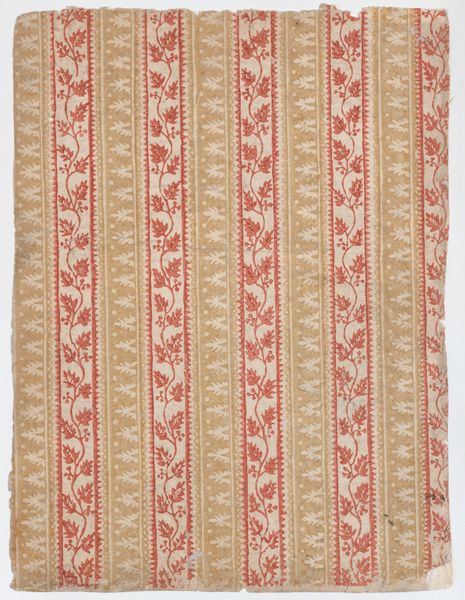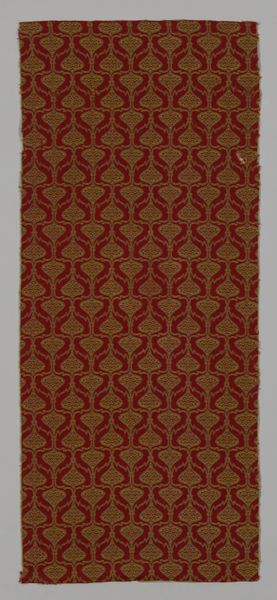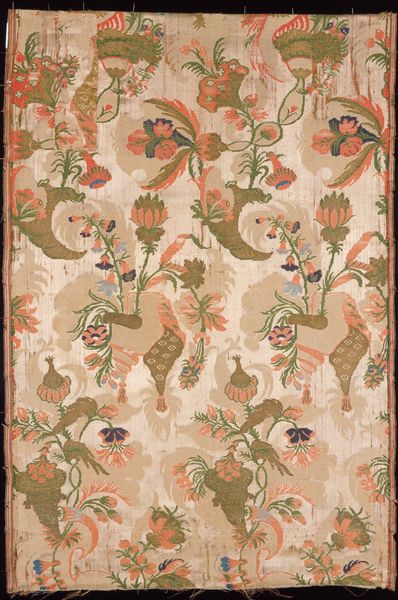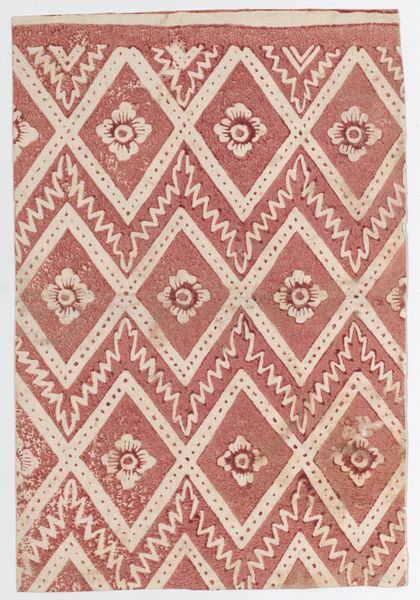
weaving, textile
#
pattern heavy
#
weaving
#
textile
#
figuration
#
geometric
#
line
#
indigenous-americas
Dimensions: 91.4 × 48.6 cm (36 × 19 1/8 in.)
Copyright: Public Domain
Curator: This panel, woven from wool, was created by the Chancay people sometime between 1000 and 1476. It is currently held in the collection of The Art Institute of Chicago. Editor: It’s surprisingly lively. All those repeated figures in action poses create a dynamic rhythm across the whole piece. Is that…are they monkeys? Curator: Yes, you've correctly identified them. The stylized red figures do seem to depict monkeys. It's interesting how the weaver utilizes repetition and variation of the monkey motif to create the overall design. What’s fascinating is the amount of work behind textile production and its value within the Andean society of the time, weaving like this would have been both materially valuable but likely communicated social meaning too. Editor: Right, that makes me think about the power that these images held, both practically and symbolically. Imagine how it might have functioned in its original context – a wall hanging perhaps, signaling status or telling a story? Curator: Potentially. We know these textiles were sometimes used in burial rituals, signifying a person's wealth and status even in death. The act of creation was not just production but embodied a cultural and even spiritual dimension. What kind of labor goes into sourcing the wool, creating the dyes, and then the slow, deliberate act of weaving on a loom? Editor: The repetition speaks to that steady labor you describe, yet there are variations that highlight individual choices or perhaps changes in resources over time. We have to remember these aren't anonymous crafts but the expression of cultural and personal identities. I can also wonder if these patterns allude to a wider, shared visual vocabulary of its society. Curator: Precisely, and considering its age, the level of preservation and detail is astonishing. The color holds too. We must be respectful of the skill of those who dyed and wove with their hands, knowing now it sits behind glass as a prized art object. Editor: And that journey from functional or ritual object to museum piece drastically alters how we perceive it, removing it from its original intended social role but also preserving it for continued learning and dialogue. Curator: Indeed, looking at the quality of materials combined with design elements lets us acknowledge how vital artmaking practices like this are. Editor: A perfect point—one last glance at these striking red monkeys reminds us of the artistic vibrancy and resourcefulness in Latin American history.
Comments
No comments
Be the first to comment and join the conversation on the ultimate creative platform.
